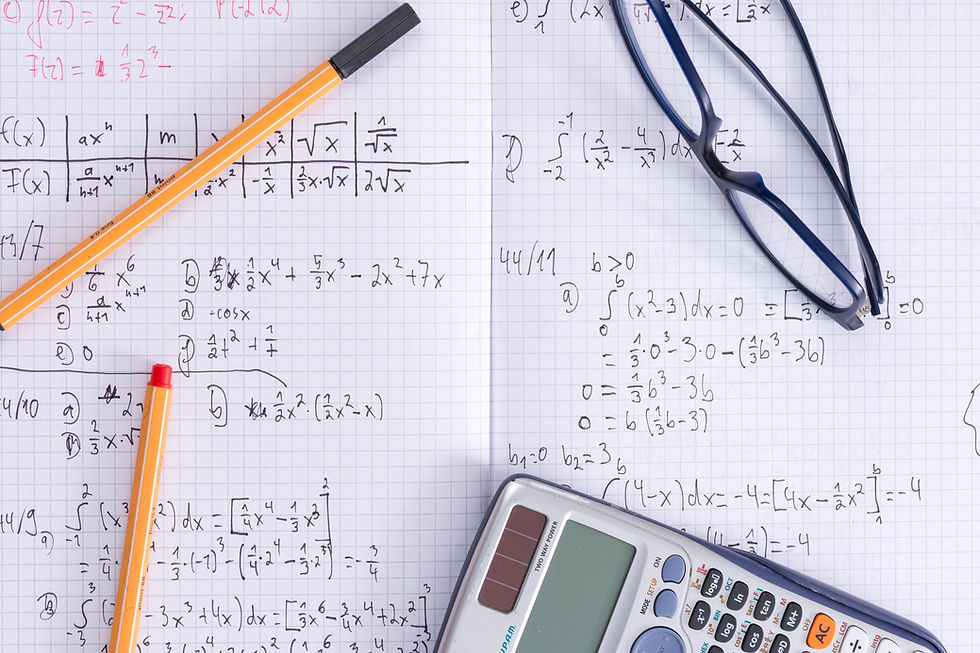The 1, 2, 3's of Preschool Math at Home
- Bright Kids

- Nov 4, 2020
- 3 min read
When parents think of teaching math to their children, they often think of their own experience growing up--hours at the kitchen table laboring over questions and equations they just didn’t understand. Not exactly the most enticing way to spend time today. And teaching math to preschool and kindergarten-age children? Where to begin with this terrifying prospect!

It doesn’t have to be quite so scary, though. Introducing and building up core concepts and skills when it comes to math can actually be quite fun! Children ages 3-6 thrive on play-based learning and exploration when it comes to new topics, so parents should absolutely take advantage of this fun approach.
Have family game time that requires number identification and counting!
Card Games for All!
Playing simple card games as a family is a great way to spend quality time together, while simultaneously sneaking a little bit of learning into the mix! Before even playing formal card games, a simple deck can be used in a wealth of early learning moments--categorical reasoning (sorting cards by color, suit, or number), number order (who can find 2-10 and put them in order first), and even a classic game of 52 pick-up (plain old counting skills)!
Once your child is familiar with what a playing card contains (numeral, quantity, color, suit/shape), you can expand the learning opportunities accordingly. You could even have your child help you out during the prep process, since you may not want to use all 52 cards for some of these games. Have them help you pick out all the 2s, 3s, 4s, etc and then you can shuffle the smaller deck together and get started with your games!

Memory
Lay out the cards upside down in a grid pattern and proceed to take turns trying to find matching numbers. Make sure to identify what number you turn over each time and say specifically if the two cards have the same number on them. You can even take it another step and say or ask which number is bigger or smaller every so often! And then when you’ve found all of the matches, count how many cards you each have and determine who has the most!
Go Fish
Everyone has played the classic matching game Go Fish! at one point in their childhood. If holding up more than a few cards is still challenging for your child’s dexterity, it might be helpful to have your child lay their cards down and have a little barrier up so you can’t see their cards. A folder, picture book, or something else like that can work to keep their secrets! Once you have your set-up established, this game will help with identifying numbers said aloud, following instructions (don’t forget to pick up that additional card!), and taking turns.
War
You’ll definitely want to use a modified version of your card deck for this game! War is a fantastic game to help recognize if numbers are bigger or smaller than one another, so you should take turns calling out the winner of each turn of the cards. As children get more comfortable with making the decision about the winner of each hand, you can pick up the pace of the competition! It’s totally fine if a game devolves into a giggle fit with this hastened pace, too! You’re making learning fun, and fun needs some giggles.
Board Games for the Bored!
Some children can very quickly memorize a number and its corresponding numeral, but what about quantitative representations of those same numbers and numerals? One-to-one correspondence and counting representative quantities can be tricky for children, simply because their motor skills are still developing. At this young age, that’s entirely appropriate, so no need to worry! Board games with a counting component are a wonderfully tactile approach to help your child with mathematical one-to-one correspondence.

Trouble & Chutes and Ladders
Both of these board games provide ample opportunity to practice counting quantities accurately. In Trouble, your child not only has to count the dots on the die in the popper, but your child also needs to count that same number of spaces to move (and then fit the piece back into the hole!). Chutes and Ladders also requires counting the same number of spaces on the board to move after taking a turn at the spinner.
Hi! Ho! Cherry-O
Hi! Ho! Cherry-O incorporates both identifying the number on the spinner, but then also physically picking the same quantity of fruit from the tree and placing the fruits into the basket. It’s math and dexterity in one colorful package!
Physical cards and board games are just the beginning for ways you can help your 3-6 year old with math at home. So many of the skills children need to grow their math knowledge can very easily be incorporated into everyday life for low-pressure exposure and repetition. Be on the look-out for another blog post about how to build math skills in slightly more abstract ways!






Comments